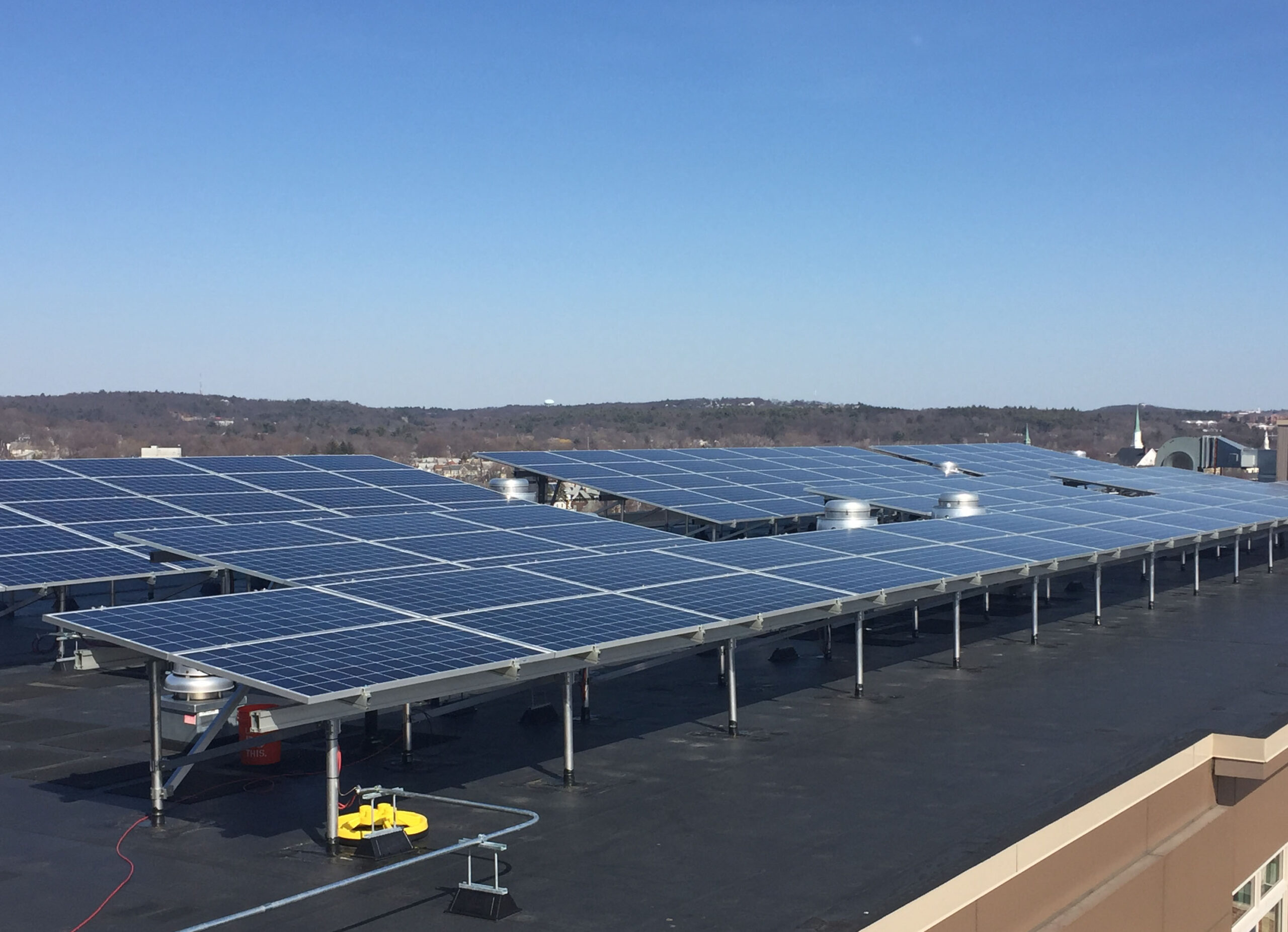Tilted PV panels cast shadows on the rows of modules behind them, necessitating a gap between rows to minimize the effects of production loss due to shadows cast on panels in anterior module rows. Here are a few ideas to mitigate the impacts of this phenomenon on your PV installation.
Reduce the tilt of your south-facing array
For peak energy production on a per-module basis, PV modules have an ideal incident angle with solar rays emanating from the sun.
For some installations, however, it may make sense to reduce the tilt of the modules to a less optimal incident angle. Though this means less production on a per module-basis, it can mean a significant increase in the daily unshaded collection time for the array. This gain in effective collection time can offset the losses caused by a sub-optimal tilt for the module itself.
Consider hiring a qualified PV design professional, or using software dedicated to modeling and analyzing your system’s performance at a different tilt angle and inter-row spacing.
Locate your system on a south-facing slope
Even a five-degree inclination can have a marked impact on the amount of inter-row spacing required. This can significantly increase the number of modules you can fit in a given area.
Consider 3-in-landscape or 4-in-landscape monoslope installations
Coupled with a low tilt, this strategy can reduce inter-row spacing significantly on a given installation since modules on the same structure and slope don’t require significant spacing between them. This can be particularly effective if you can gradually elevate the anterior monoslope PV structures as you work your way north through the site.
In Summary, there are no one-size-fits-all PV module or racking solution for optimizing your PV installation’s performance. Make sure to study the site, and select the products that best suit the geography, topography, and engineering constraints of your installation site. If necessary, consider employing the help of a PV design professional to help you navigate the myriad options and select and design a system that will meet your objectives.


